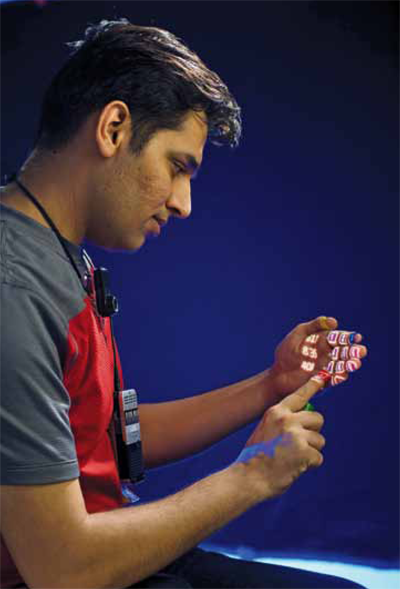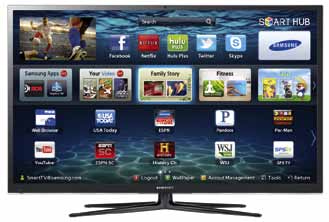Device makers are focusing on making user-interfaces easy, clean and intuitive. As more and more technology surrounds our life, it should blend with the environment, be less blatant and mingle naturally with users
Janani Gopalakrishnan Vikram
JULY 2012: It is easier to interact with humans than with machines. The reason is simple: Even if the person at the other end speaks a different language, we will exercise our intelligence to understand what he is trying to say, just as he tries to put his point forth using his body language. So the communication effort is two-way. However, with machines you have to communicate in a precise manner that they will understand. You cannot say just anything to them and leave their software to do the interpretation. One wrong command can send things helter-skelter.

Hope is in sight. A lot of human-machine interaction experts around the world are working on simplifying our interactions with machines. They are coming up with innovative user-interfaces that are easier, more natural, intuitive and human.
It is becoming possible to give instructions verbally to computers and mobile phones, express your instructions as simple gestures, or even make your machines understand what you are thinking. Speech, gestures and thought are promising to be the future of human-machine interfacing.
While the medium of interface is one key trigger for innovation in the area of user-interfaces, there are other interesting motives as well. These include making user-interfaces that consume and dissipate less energy, are smaller, lighter and less harmful to the environment, use more natural materials, and meet the special needs of challenged users or specific applications. Designers are also trying to make user interfaces that are less conspicuous and blend with the environment. Otherwise, a future scenario filled with computers (the vision of ubiquitous computing) would look like a computer science lab!
“Good user interfaces are crucial for good user experience. A technology, no matter how good, will hardly reach a breakthrough if designers don’t manage to make the user-interface as intuitive and attractive as possible. To be interested in a new product or technology, users need to understand its advantages or find themselves impressed or involved,” says Rajeev Karwal, CEO and founder, Milagrow Business & Knowledge Solutions.
“At Milagrow, we are constantly studying the consumers in their own environment. Our product and R&D team has to spend at least two days every month with the consumers using our current or future products. We are focusing on interface with robotic products, convergence electronics and mobile products,” Karwal adds.
There is rising awareness about the importance of user-interfaces and many related innovations such as SixthSense, LG Magic Wand remote control, Microsoft Surface, Prezi, Air Glove, Samsung’s Smart TV range and Tan Le’s EPOC headset. In fact, user experience and new user interfaces were the underlying theme of Consumer Electronics Show 2012. Shawn DuBravac, research director of CES, predicted on the eve of the event that 2012 would be the ‘year of the interface.’ This fits in with his other predictions about technology moving into the background, becoming less visible to the user and morphing with the environment.

“In the last few years, we have seen apps like email, Twitter and Facebook on consumer electronics devices like TVs,” DuBravac said. “Manufacturers wanted to show these properties because it said to consumers that the product is connected. But the experience is generally poor. The next focus will be on improving the user experience.”
DuBravac also noted that companies will replace complexity with simplicity, and also that natural interfaces like gesture and voice control will show up in more and more devices such as tablets during 2012.
User interface is a key area of innovation today as it can add value to an existing device, meet the special needs of a new device and make life easier for users. Here let us look at some recent innovations in this space.
Wave a wand or chant a spell
Last year was the year of touch with devices sporting touchscreens and multi-touch capabilities ruling the roost. Computer operating systems such as Windows 8 and Mac OS X Lion too feature a touchscreen-inspired interface as against the traditional desktop environment. This shows that touch is gradually becoming the main interface for not just mobile devices but primary computing devices too.
Now device makers seem to be going one step ahead, towards friction-less and more natural user interfaces such as gesture and voice. Microsoft Kinect, Apple’s iPad (since October 2011) and iPhone (with Siri) are some brilliant examples. A lot of smartphone makers are including voice-enabled search and other such features in their phones. More recently, Samsung and other consumer electronics companies have also entered the smart interaction game.






